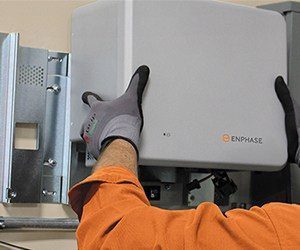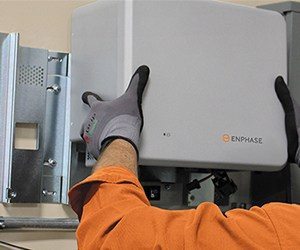A new, Australia-wide electricity standard has been introduced that gives networks the power to limit the size of household solar systems – including some solar plus storage configurations – and which could add significant costs to households looking to add more solar or install some battery storage systems.
The new standard, known as 4777.1, which has just come into effect, defines the maximum capacity for inverters at a single phase domestic site to be 5kW, unless otherwise allowed by the local network.
It means that households wishing to install a system larger than 5kW – or to add more capacity to their existing system, be it through more panels or an AC-coupled battery – risk either being refused the request, or having to pay thousands more for an upgrades to three-phase power.
The move appears to be aimed at giving networks some control over the amount of domestic solar that is coming onto the system – particularly, from those households looking to increase the size of their PV systems after the closure of premium feed-in tariffs.
But a number of industry insiders told One Step Off The Grid on Wednesday that it would also have the unintended effect of limiting battery storage uptake – something networks should be encouraging, as a potentially valuable asset, as more and more distributed solar comes on-line.
More specifically, the complexities of the new rule threaten to be a major thorn in the side of a number of key AC battery makers and installers – including Tesla, Enphase and Selectronic – placing unnecessary restrictions on the uptake of their AC-coupled products.
“Let’s say you have an existing 5kW solar system, and you want to add 4kW of Enphase of AC batteries,” one industry source explained; “the new standard defines that new system size is 9kW, and therefore open to the network to reject.
“If I was Tesla, I would be going round the twist!” said the source.
According to Geoff Bragg, from NSW-based company New England Solar Power and the head of the Solar Energy Industries Association, the new rule creates a “pain in the neck” for battery storage installation.
And it comes, ironically, at a time when battery storage uptake should be being encouraged by networks, for its role in soaking up excess solar generation and in shaving peak power demand – not to mention the “virtual power plant” benefits promised to networks through the addition of smart software and energy management, such as is being tested by AGL and other utilities.
“We would hope that networks will see sense and allow AC coupling, where it can be demonstrated that it is not going to cause voltage rise issues,” Bragg told One Step. But he said on one recent installation, it had taken four applications before the local network owner, Essential Energy, agreed to the upgrade.
It is affecting those that want to simply upgrade their solar systems, including RenewEconomy contributor and ITK analyst David Leitch, who was told he would have to upgrade to 3-phase, at a cost of several thousand dollars, because he wanted to lift his solar system from 4kW to 6kW.
As Leitch has noted in this analysis, for those high energy consumption households who want a PV system big enough to charge a battery, and perhaps help power a pool pump and air-conditioning, it takes what would have been an economically sound decision back into the realm of ideology.
“It’s just yet another thing that will piss people off. Maybe push people off grid,” said another source.
This article was originally published on RenewEconomy’s sister site, One Step Off The Grid, which focuses on customer experience and ambitions with distributed generation. To sign up to One Step’s free weekly newsletter, please click here.









